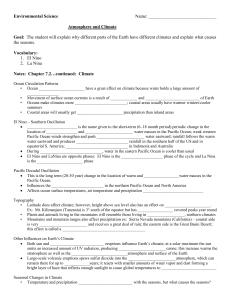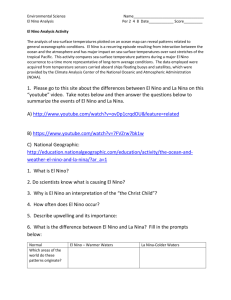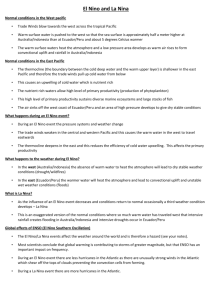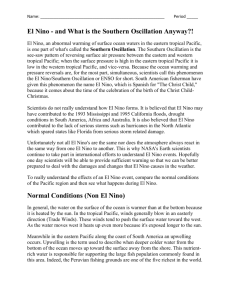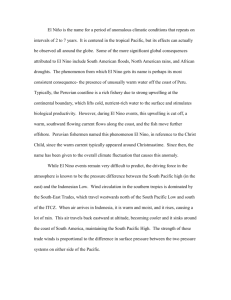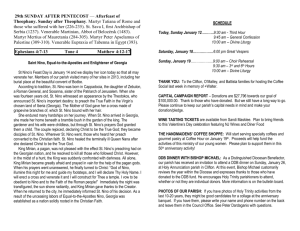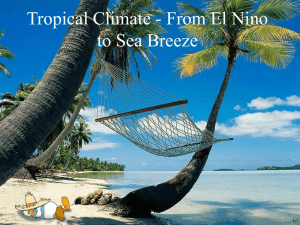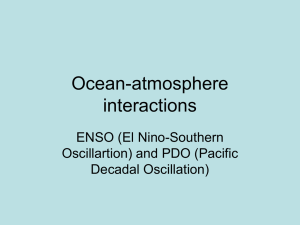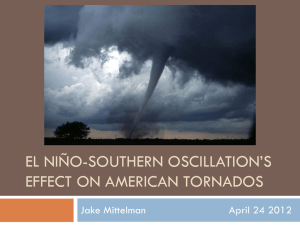Name: Date: Period: ______ El Nino Learning Cycle Learning Pre
advertisement
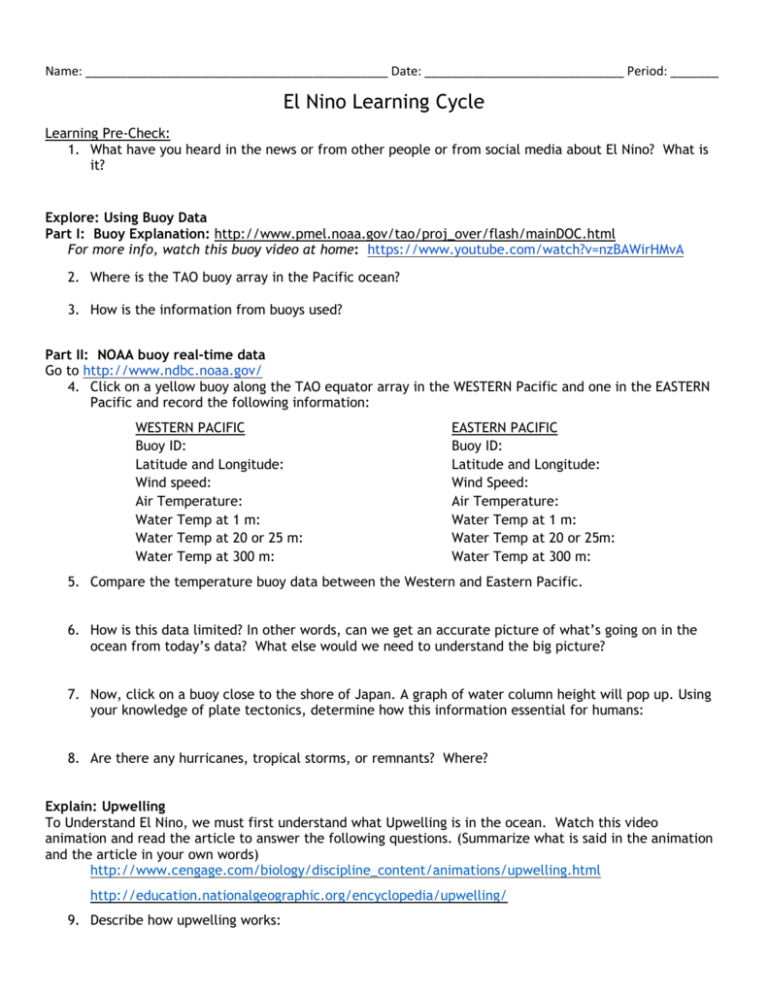
Name: ____________________________________________ Date: _____________________________ Period: _______ El Nino Learning Cycle Learning Pre-Check: 1. What have you heard in the news or from other people or from social media about El Nino? What is it? Explore: Using Buoy Data Part I: Buoy Explanation: http://www.pmel.noaa.gov/tao/proj_over/flash/mainDOC.html For more info, watch this buoy video at home: https://www.youtube.com/watch?v=nzBAWirHMvA 2. Where is the TAO buoy array in the Pacific ocean? 3. How is the information from buoys used? Part II: NOAA buoy real-time data Go to http://www.ndbc.noaa.gov/ 4. Click on a yellow buoy along the TAO equator array in the WESTERN Pacific and one in the EASTERN Pacific and record the following information: WESTERN PACIFIC Buoy ID: Latitude and Longitude: Wind speed: Air Temperature: Water Temp at 1 m: Water Temp at 20 or 25 m: Water Temp at 300 m: EASTERN PACIFIC Buoy ID: Latitude and Longitude: Wind Speed: Air Temperature: Water Temp at 1 m: Water Temp at 20 or 25m: Water Temp at 300 m: 5. Compare the temperature buoy data between the Western and Eastern Pacific. 6. How is this data limited? In other words, can we get an accurate picture of what’s going on in the ocean from today’s data? What else would we need to understand the big picture? 7. Now, click on a buoy close to the shore of Japan. A graph of water column height will pop up. Using your knowledge of plate tectonics, determine how this information essential for humans: 8. Are there any hurricanes, tropical storms, or remnants? Where? Explain: Upwelling To Understand El Nino, we must first understand what Upwelling is in the ocean. Watch this video animation and read the article to answer the following questions. (Summarize what is said in the animation and the article in your own words) http://www.cengage.com/biology/discipline_content/animations/upwelling.html http://education.nationalgeographic.org/encyclopedia/upwelling/ 9. Describe how upwelling works: 10. How is upwelling important? Explain: Sketch conditions in the ocean. Use the resources posted on our class website to help you. NORMAL CONDITIONS EL NINO LA NINA Elaborate: Impacts of El Nino – fishing, rain, drought, health conditions, economics http://video.nationalgeographic.com/video/news/101-videos/el-nino?source=searchvideo 11. What are the impacts of El Nino on the weather in SE Asia? 12. What are the impacts of El Nino on California’s weather? 13. What are the economic impacts of El Nino? 14. What are the impacts of El Nino on fishing in Peru and in CA? Why? 15. Think about it: How would warmer land temperatures impact human health? 16. Think about it: How would increased flooding impact human health? Elaborate: Current El Nino Forecast – Read the article and answer the summary questions http://www.vititoelawgroup.com/blog/2015/11/10-ways-you-can-prepare-for-el-nino-2015.shtml 17. Describe the current El Nino Forecast: 18. How can you prepare for El Nino rains? Evaluate: Cold and Warm Episodes by Season—which years were likely El Ninos? Go back to the website: http://www.ndbc.noaa.gov/ Look at the data provided by buoys along the equator in the Eastern Pacific Ocean. Normal temperatures range from -0.5 to 0.5 Warmer than normal temperatures are higher than 0.5 Cooler than normal temperatures are lower than -0.5 19. Which years could indicate an El Nino? How do you know? 20. Which years could indicate a La Nina (colder than normal temperatures?) How do you know?

